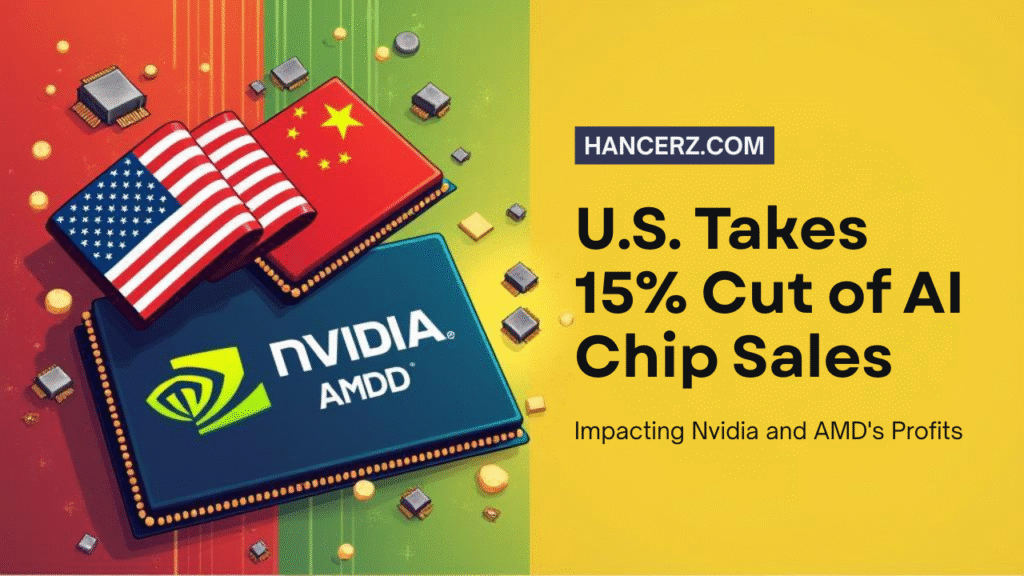U.S. Will Now Take 15% of Nvidia and AMD AI Chip Sales to China—Here’s What That Means
Quick Summary (Start Here)
In a move that sounds almost fictional, the U.S. government struck an unusual deal with Nvidia and AMD: they’ll send 15% of their AI chip sales revenue from China back to Washington. In exchange, companies can resume shipping specific chips—namely Nvidia’s H20 and AMD’s MI308—to China. It’s a high-stakes example of politics meeting silicon, designed to balance security, market access, and cash collection.
The VergeReuters
Why This Deal Is Anything But Ordinary
Let’s unpack how we got here:
- Earlier this year, the U.S. banned exports of top-tier AI chips, citing national security.
- Nvidia and AMD later secured licenses to ship downgraded versions of their chips—H20 and MI308—under one condition: they give Washington 15% of every dollar made from those sales.
- Originally, Trump pushed for a 20% cut, but settled at 15% after negotiations with Nvidia’s CEO.
The VergeNew York Post
What’s at Stake—and Who Called the Shots
Security vs. Revenue
On one hand, the U.S. cleared a path for certain exports, preserving ties to the Chinese market. On the other, the government effectively taxed those very sales—adding a $2–3 billion annual windfall to federal coffers.
The VergeReuters
Markets React
Nvidia’s stock dipped about 1.4%, AMD’s by 2.6%, as traders digested what this means for future margins.
Barron’s
Legal and Global Implications
Experts are raising eyebrows at the precedent—can the government demand a revenue share as export “permission”? Some view it as effective policy; others say it reads too closely to an unconstitutional export tax.
RedditReuters
Pros, Cons & Key Questions
Upside:
- The U.S. keeps control over AI chip exports while still letting companies profit.
- Political optics look strong: tough on China, yet pragmatic for American tech.
Downside:
- Could chill future innovation or investment in chip development.
- Adds complexity to an already tense U.S.–China tech roadmap.
- Raises legal and ethical flags around export control fairness.
FAQ (Quick Clarity)
| Question | Practical Answer |
|---|---|
| Is this a tax? | Sort of—it acts like a fee on U.S. exports, but it’s unprecedented. |
| Are the full-feature chips okay to export? | No—only the stripped-down models like H20 and MI308 are approved. |
| How much money are we talking? | Estimates range between $2 to $3 billion annually for the U.S. government. |
| Why did markets react negatively? | Investors expect lower profit margins and increased regulatory unpredictability. |
What Comes Next?
- Watch regulator guidance: Will future export requests face similar revenue-sharing demands?
- Assess impacts: How will chipmakers reposition their strategies under political steering?
- Legal developments: Could Congress or the courts challenge the fairness—or legality—of this deal?
Final Thought
This is a rare moment when international tech trade becomes a direct revenue lever for government policy. Nvidia and AMD may be allowed back into China’s AI market—but at a steep political and financial price. Whether this becomes a blueprint for future deals—or is a cautionary anomaly—remains to be seen.




